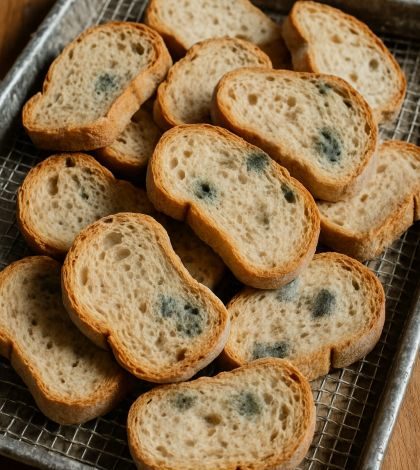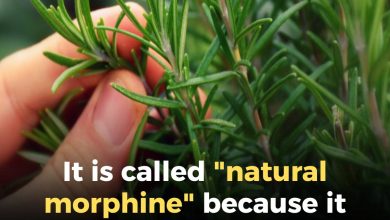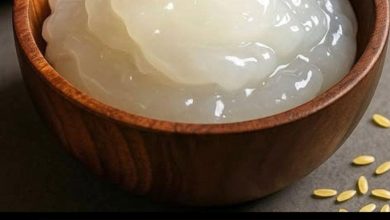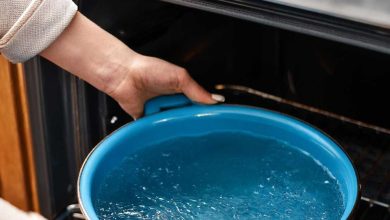Pulled out some stale bread from pantry. My mother-in-law says it’s wasteful not to use it, but it looks bad to me. What should I do?

We’ve all experienced it: that moment when you reach into the pantry, hoping for a fresh slice of bread, only to discover it’s gone stale. It can be disappointing to see food that no longer looks as appealing as it once did. However, before you even think about throwing it out, your mother-in-law might be there reminding you, “it’s wasteful not to use it.” This common household dilemma — whether to toss or repurpose stale bread — is something many of us face.
ADVERTISEMENT
Is Your Stale Bread Still Good? Understanding What Stale Means
When bread goes stale, it simply means it has lost its moisture and become dry and hard. This natural process is called retrogradation. It happens when the starch molecules inside the bread change, causing them to push out water. This can occur just a few days after baking, especially if the bread isn’t stored properly.
ADVERTISEMENT
It’s important to know that stale bread isn’t the same as moldy bread. While stale bread might not have the best texture, it’s generally still safe to eat. The key is to look for any signs of mold or spoilage. If it’s just dry and hard, you’re usually good to go!
ADVERTISEMENT
Is It Safe to Eat Stale Bread? What to Look For
Good news! As long as there’s no mold present, stale bread is typically safe to eat. Mold can look like fuzzy green, black, or white spots. If you see mold, it’s a definite sign to throw the bread away, as mold can produce harmful substances called mycotoxins. But if your bread is simply dry and hard, you can still use it.
Of course, the texture and taste won’t be like fresh bread. To make it more enjoyable, try toasting it or using it in recipes where the texture isn’t as noticeable. Think about delicious dishes like bread pudding or croutons.
The Big Picture: How Stale Bread Affects Our Planet
Did you know that food waste is a huge problem for our environment? About 1.3 billion tons of food are wasted globally each year, and bread is one of the most frequently wasted items. When we throw away food, it’s not just the food itself that’s wasted; it’s also all the resources used to make it, like water and energy. Plus, when food rots in landfills, it releases greenhouse gases that harm our planet.
By finding ways to use stale bread, you can actually help reduce food waste and its negative impact on the environment. Even small actions, like repurposing stale bread, can make a difference towards a more sustainable food system.
Giving Stale Bread a Second Life: Clever Tricks to Try
You might be surprised by how many creative ways there are to bring stale bread back to life! One popular trick is to sprinkle the bread with a little water and then place it in a preheated oven at 350°F (175°C) for about 10 minutes. This simple step can help restore some moisture, making the bread much more pleasant to eat.
Another fantastic option is to use stale bread in recipes that naturally add moisture. Dishes like French toast, bread pudding, or even stuffing are perfect for this. These recipes can turn dry bread into a delicious meal, ensuring that nothing goes to waste.
The Internet’s Favorite Hacks for Stale Bread
Social media is full of clever ideas for using stale bread! One very popular hack is to make your own homemade breadcrumbs. Just grind the stale bread in a food processor, and you’ll have fresh breadcrumbs to use in recipes like meatballs or as a crispy topping for casseroles. Store them in an airtight container for future use.
Another trending idea is to turn stale bread into crispy croutons. Simply cut the bread into cubes, toss them with some olive oil and your favorite seasonings, and bake until they’re golden and crunchy. These homemade croutons are perfect for adding a delightful crunch to salads and soups.
Does Stale Bread Lose Its Goodness?
When bread goes stale, its main change is in texture, not its nutritional content. Bread is a good source of carbohydrates, fiber, and some important vitamins and minerals. These nutrients generally remain in the bread even after it becomes stale.
However, if your bread is enriched or fortified with extra nutrients, some of those might decrease over time. Also, let’s be honest, the enjoyment of eating plain stale bread might go down, which could affect how often you choose to eat it!
Keeping Bread Fresh: The Best Ways to Store It
Proper storage is super important if you want to keep your bread from going stale quickly. The best place to store bread is in a cool, dry spot, like a bread box or a paper bag that allows some air to circulate. Try to avoid storing bread in the refrigerator. The cold temperature can actually make the starch in the bread crystallize faster, leading to quicker staleness.
If you have more bread than you can eat in a few days, freezing it is a great option. Wrap the bread tightly in plastic wrap or aluminum foil, and then place it in a freezer bag. When you’re ready to use it, just let it thaw at room temperature, or you can even toast it directly from the freezer.
When to Say Goodbye: Signs Your Bread is Past Its Prime
While stale bread can often be saved, there are definitely times when it’s best to throw it out. If you see any signs of mold — like fuzzy spots or a strange, off smell — it’s time to toss that bread. Mold can spread very quickly, even if you don’t see it all over the loaf.
Also, if your bread has been sitting around for a very long time and has become extremely hard or has an unpleasant taste, it’s probably not worth trying to save. In these cases, it’s always better to put your safety and the quality of your food first.
Food Waste Around the World: Different Ways of Thinking
It’s interesting to see how different cultures view food waste. For instance, in many European countries, there’s a strong tradition of using every part of food, including stale bread, in creative ways. Think of classic dishes like Italian panzanella (a bread salad) or French pain perdu (which is simply French toast!). These are traditional recipes that cleverly use leftover bread.
On the other hand, some cultures might prefer their food perfectly fresh and might discard anything that’s no longer at its peak. Understanding these cultural differences can give us new ideas on how we approach food waste and inspire us to adopt more sustainable habits.
What the Pros Say: Chefs and Stale Bread
Many chefs don’t see stale bread as a problem, but rather as an opportunity! Top chefs often talk about how important it is to waste as little as possible and find creative uses for ingredients that might otherwise be thrown away. Stale bread can be a super versatile ingredient in the kitchen, perfect for many different dishes.
For example, Chef Massimo Bottura is famous for his dedication to reducing food waste. He has even created recipes specifically designed to use stale bread. His approach really shows how much potential there is for culinary creativity and sustainability when we think differently about food.
Making Your Choice: What to Consider
When you’re trying to decide whether to use or throw out stale bread, think about a few key things: safety, taste, and the environmental impact. If the bread is safe to eat and you can use it in a way that makes it taste good, then it’s probably worth saving. However, if the bread is moldy or just plain unappetizing, it’s best to prioritize your health and the quality of your food.
Ultimately, the choice is yours, based on your own preferences and values. By knowing all the options and the benefits of using stale bread, you can make a decision that feels right for you and helps contribute to a more sustainable lifestyle.
Do you have any favorite recipes for using up stale bread that you’d like to share?




